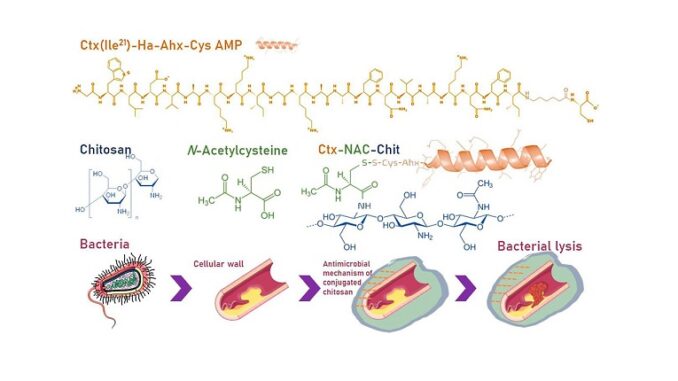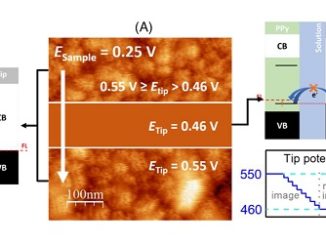
Conjugation of Ctx(Ile21)-Ha Antimicrobial Peptides to Chitosan Ultrathin Films by N-Acetylcysteine Improves Peptide Physicochemical Properties and Enhances Biological Activity
Abstract: The importance of obtaining new compounds with improved antimicrobial activity is a current trend and challenge. Some polymers such as chitosan have shown promising bactericidal properties when they are structurally modified, which is due to the binding versatility provided by their free amines. Likewise, antimicrobial peptides (AMPs) have received attention in recent years because of their bactericidal activity that is similar to or even better than that of conventional drugs, and they exhibit a low induction rate of antimicrobial resistance. Herein, the modified AMP Ctx(Ile21)-Ha-Ahx-Cys was conjugated to chitosan using N-acetylcysteine as an intermediate by the carbodiimide method. Films were prepared using protonated chitosan in 1% acetic acid and Ctx(Ile21)-Ha-Ahx-Cys AMP dissolved in N-acetylcysteine-chitosan; 1.6 mmol of ethylcarbodiimide hydrochloride, 1.2 mmol of N-hydroxysulfosucchimide, and 0.1 mol L –1of N-morpholino)ethanesulfonic acid buffer at pH 6.5 by continuous stirring at 100 × g for 10 min at 37 °C. Physicochemical properties were evaluated by Fourier-transform infrared spectroscopy, differential scanning calorimetry/thermogravimetric analysis, and X-ray diffraction to determine the mechanical properties, solubility, morphology, and thickness. Furthermore, the antimicrobial activities of chitosan-based conjugated films were evaluated againstStaphylococcus aureus,Pseudomonas aeruginosa,SalmonellaTyphimurium, andEscherichia coli. The results showed that the conjugation of a potent AMP could further increase its antibacterial activity and maintain its stable physicochemical properties. Therefore, the developed peptide–chitosan conjugate could be applied as an additive in surgical procedures to prevent and combat bacterial infection.
Author(s): Roque-Borda, C. A.; Antunes, B. F.; Borgues, A. B. T.; Pontes, J. T. C. d.; Meneguin, A. B.; Chorilli, M.; Trovatti, E.; Teixeira, S. R.; Pavan, F. R.; Vicente, E. F.
ACS Omega
Published: August 5, 2022
DOI: https://doi.org/10.1021/acsomega.2c02570
CDMF
The CDMF, hosted at the Federal University of São Carlos (UFSCar), is one of the Research, Innovation and Dissemination Centers (RIDC) supported by the São Paulo State Research Support Foundation (Fapesp), and also receives investment from the National Council Scientific and Technological Development (CNPq), from the National Institute of Science and Technology of Materials in Nanotechnology (INCTMN).




